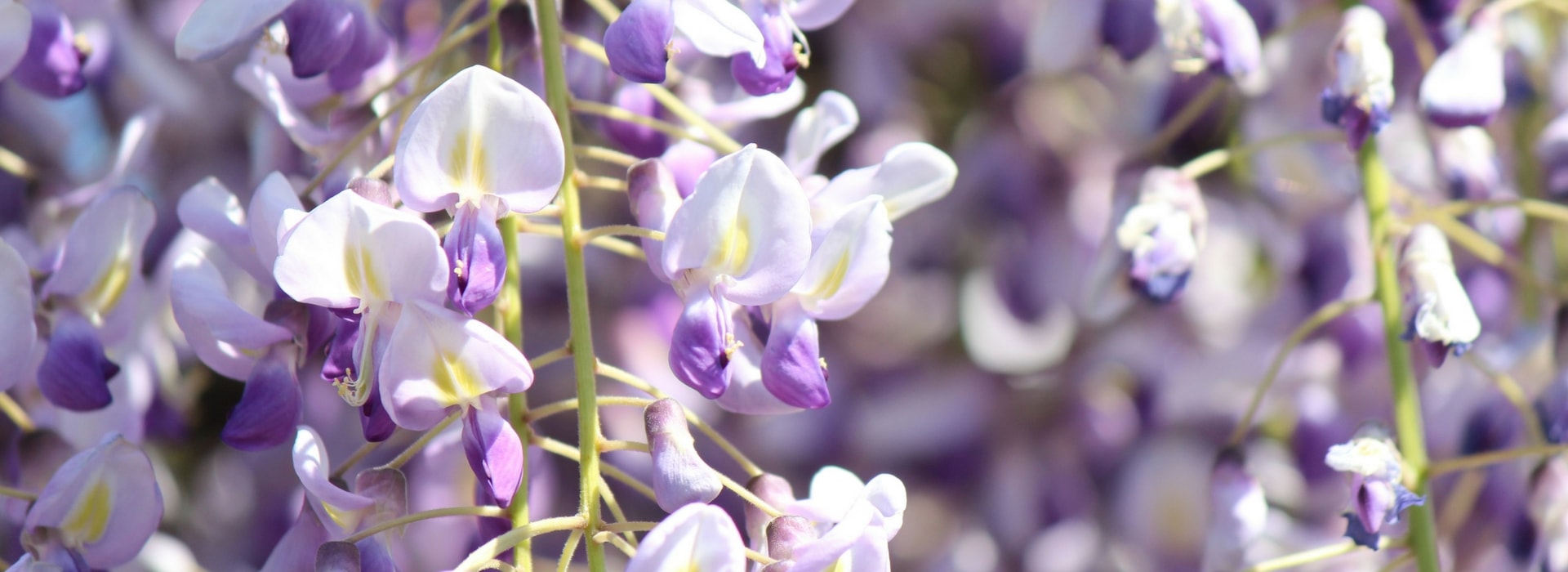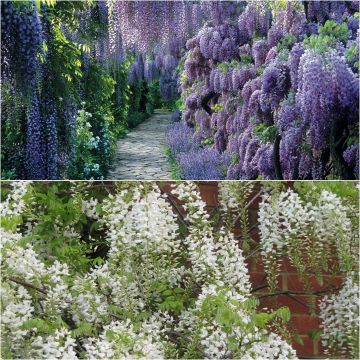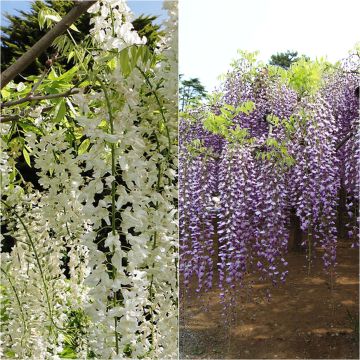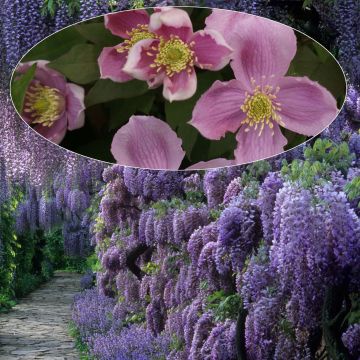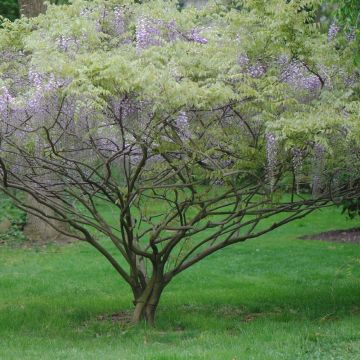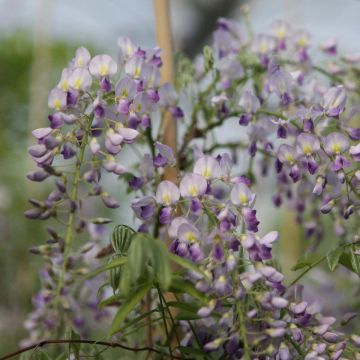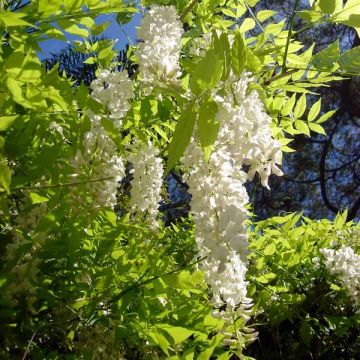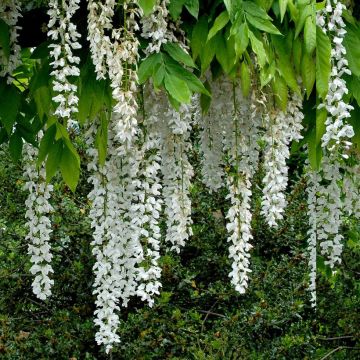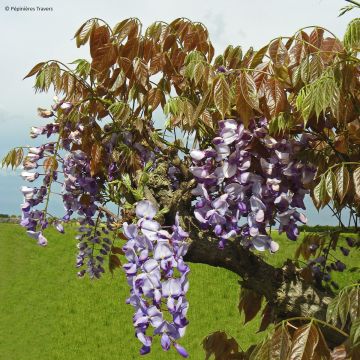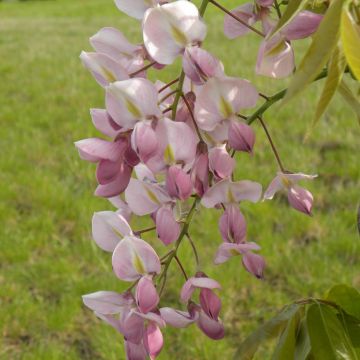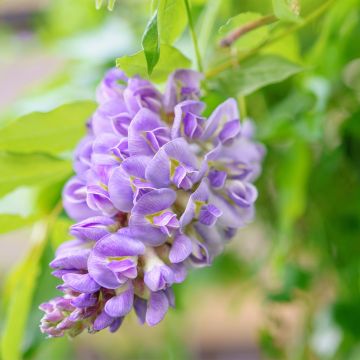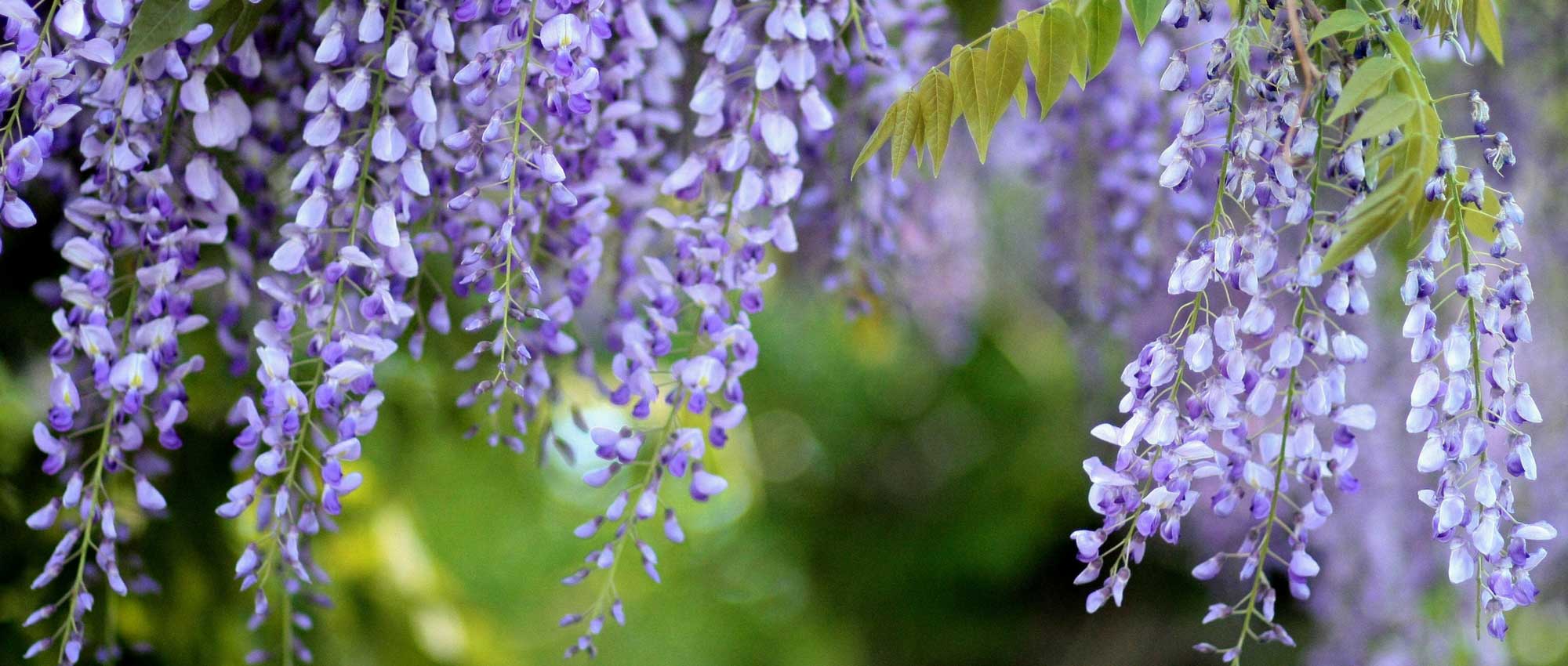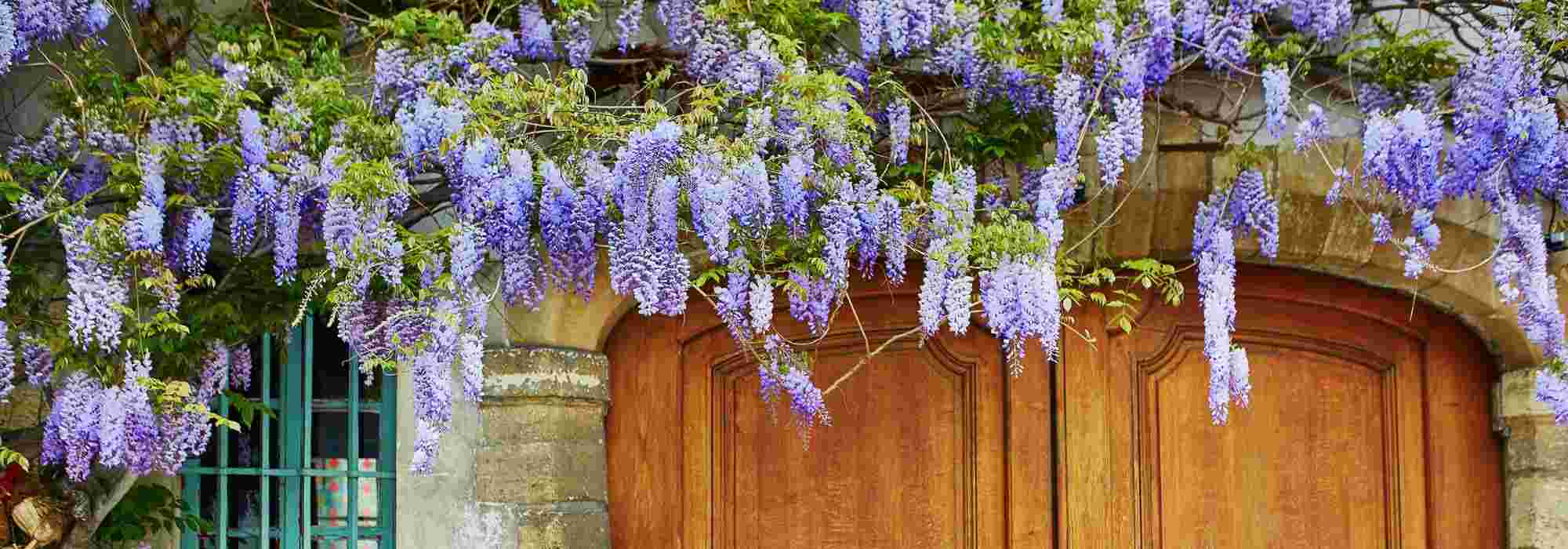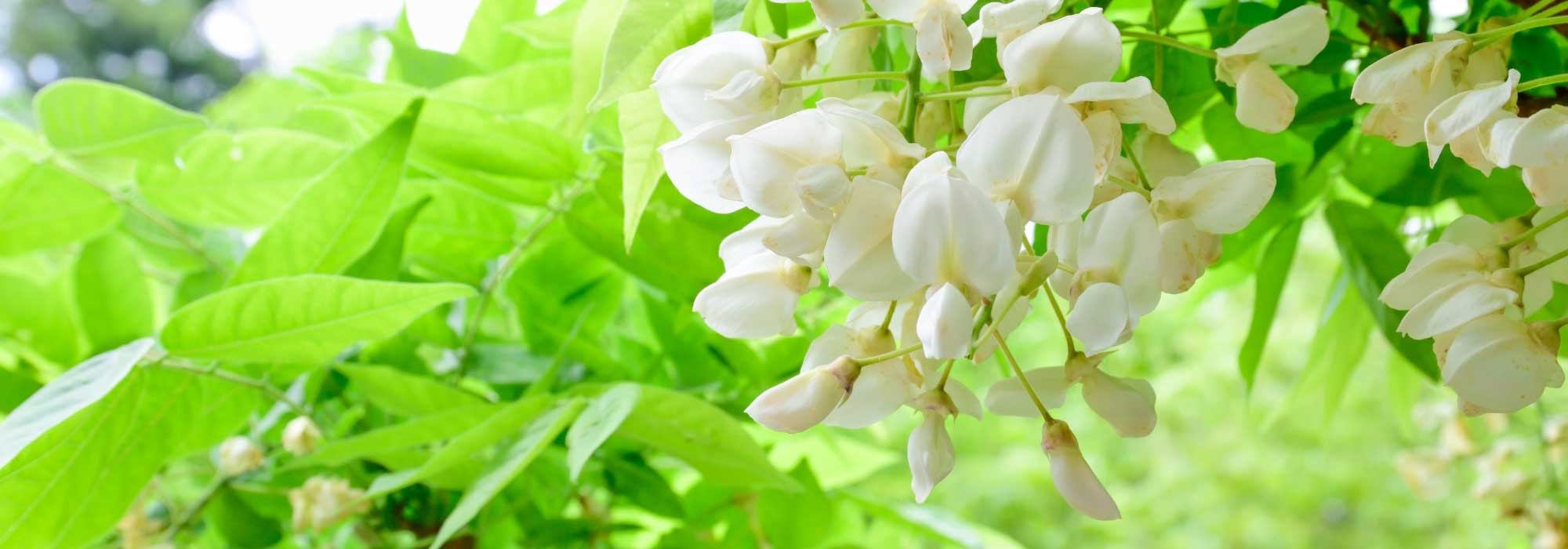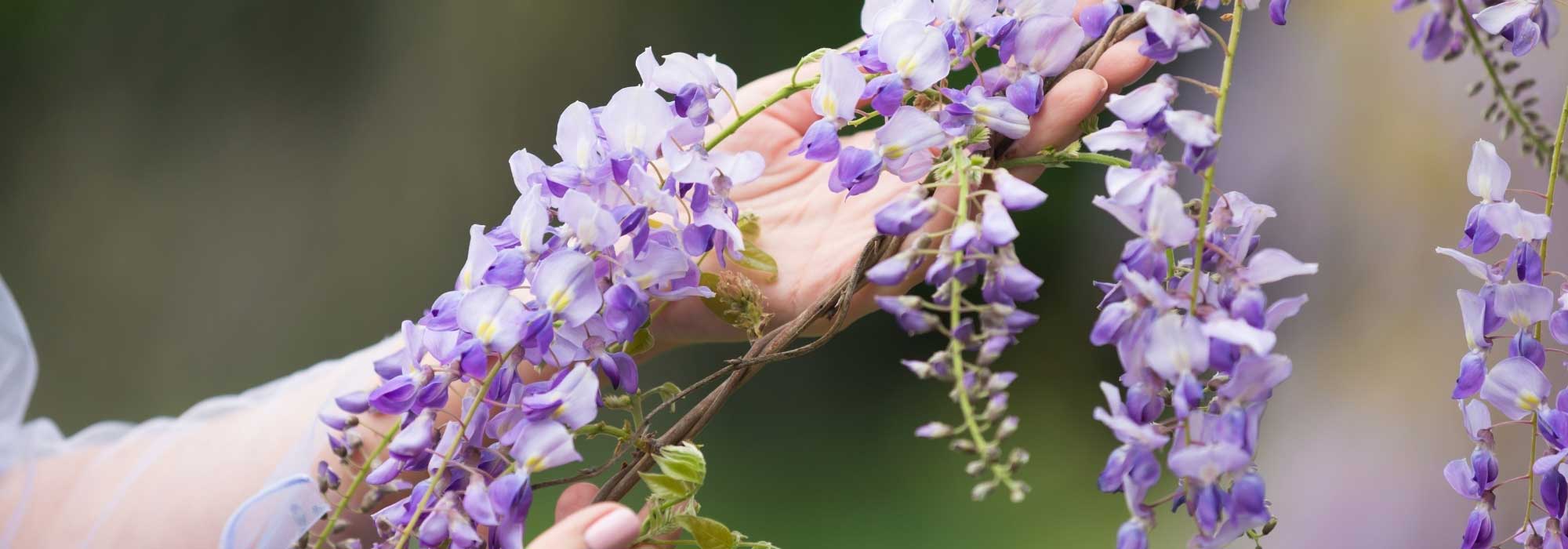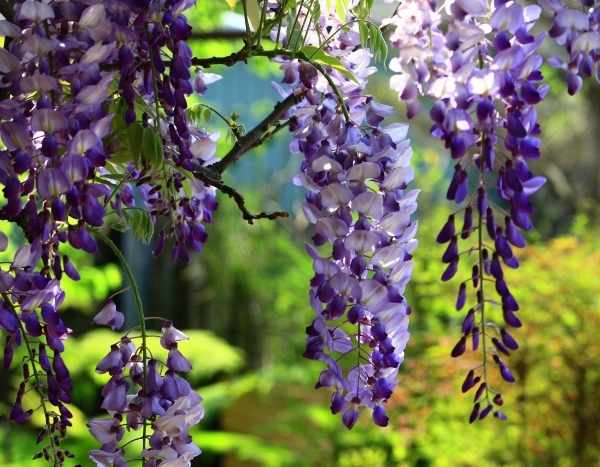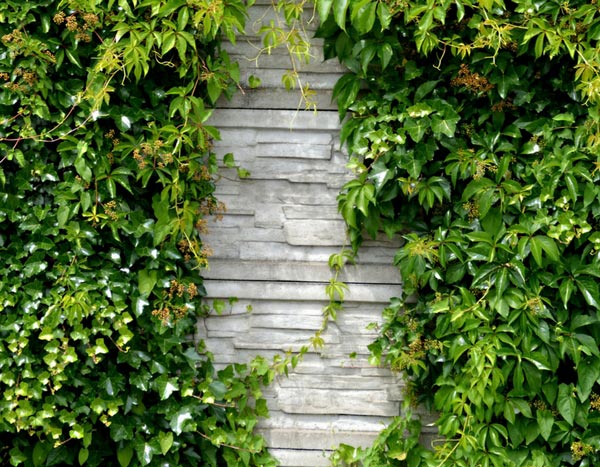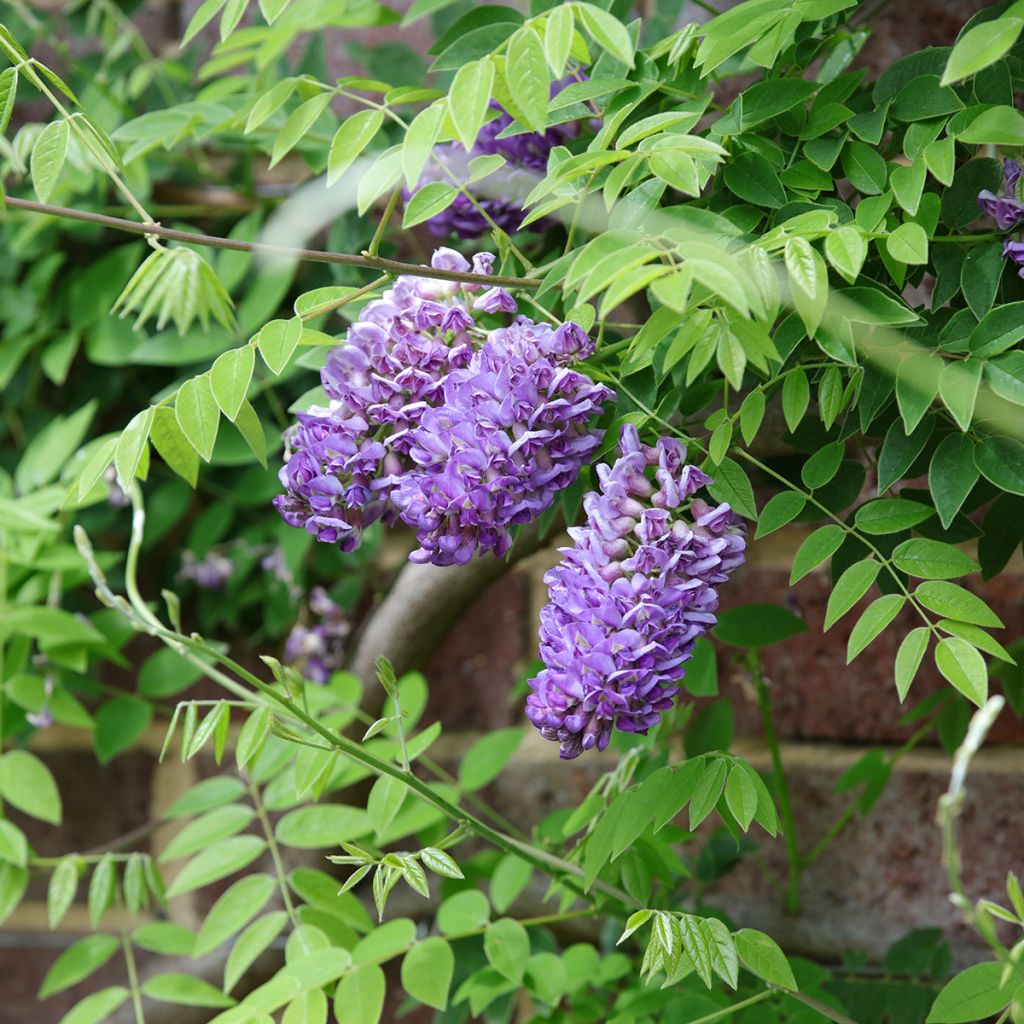

Wisteria frutescens Longwood Purple
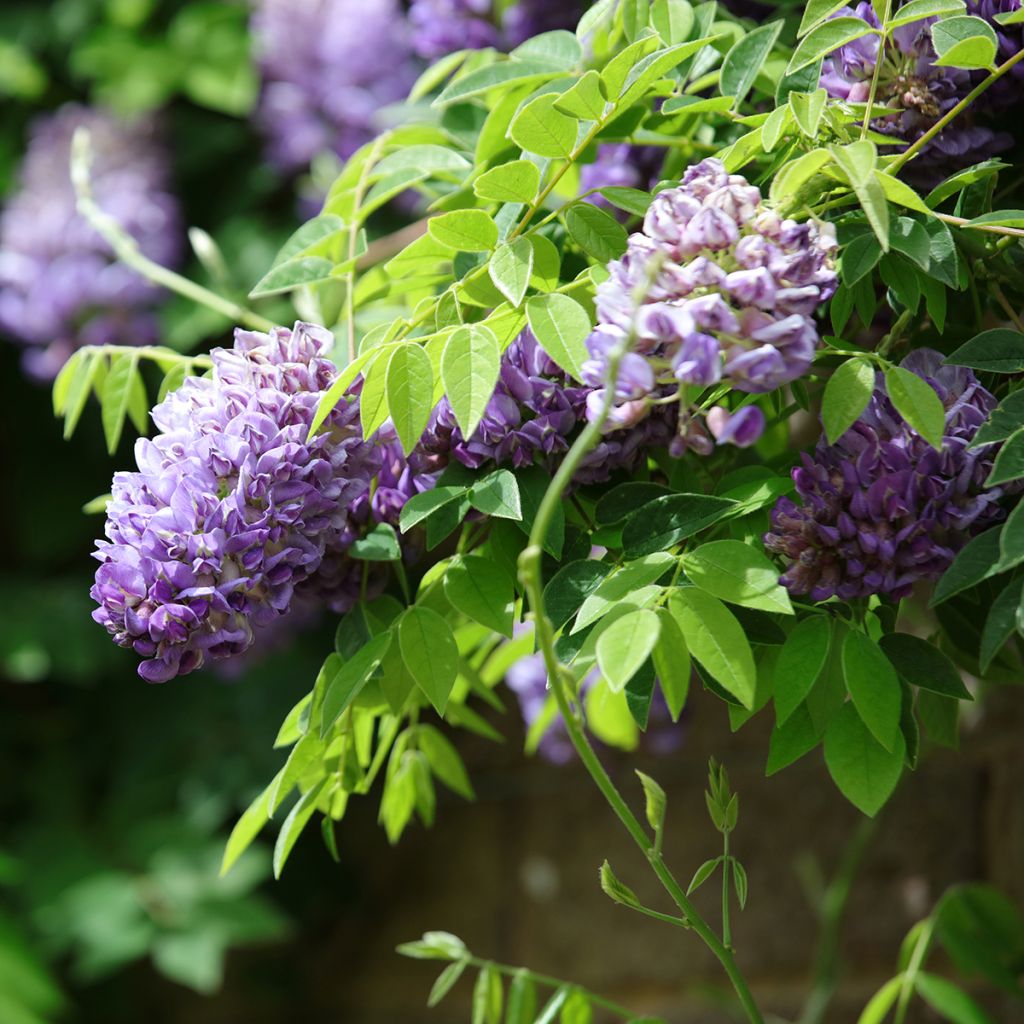

Wisteria frutescens Longwood Purple
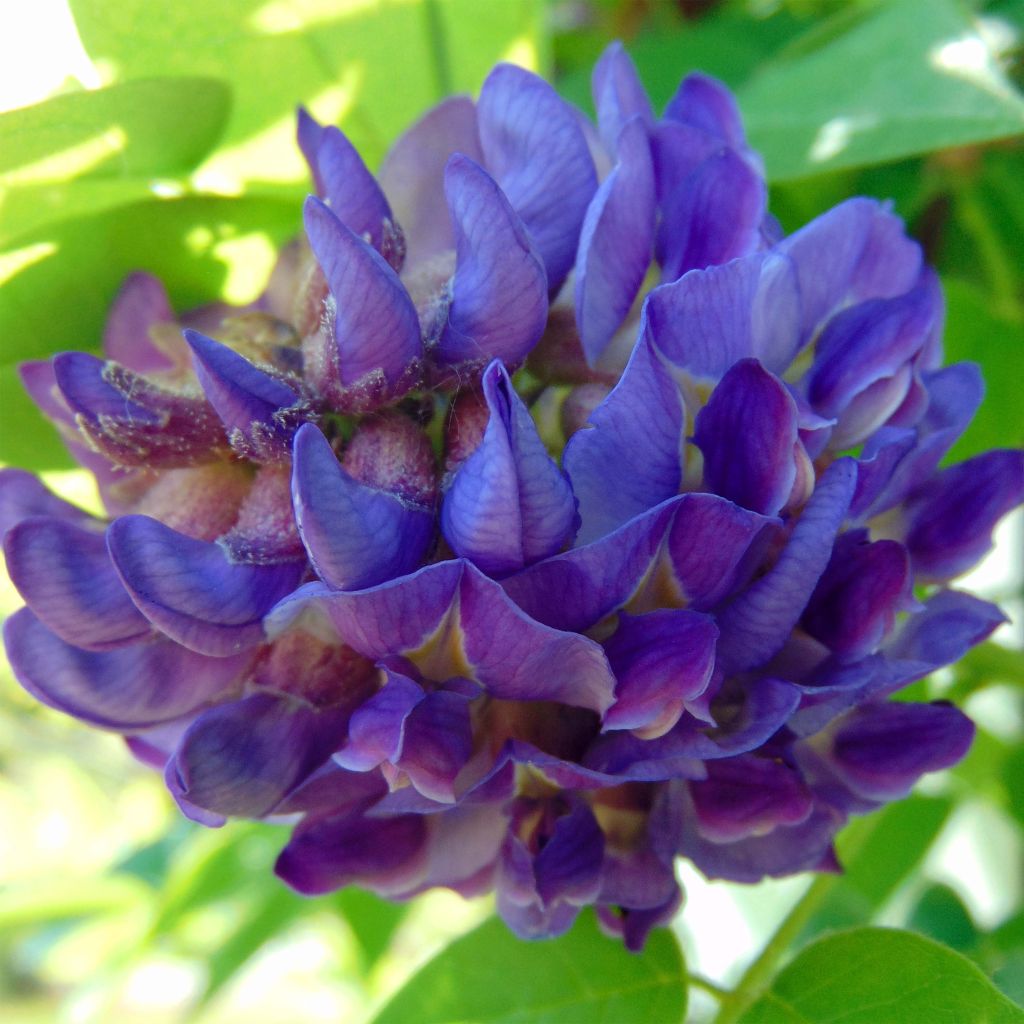

Wisteria frutescens Longwood Purple
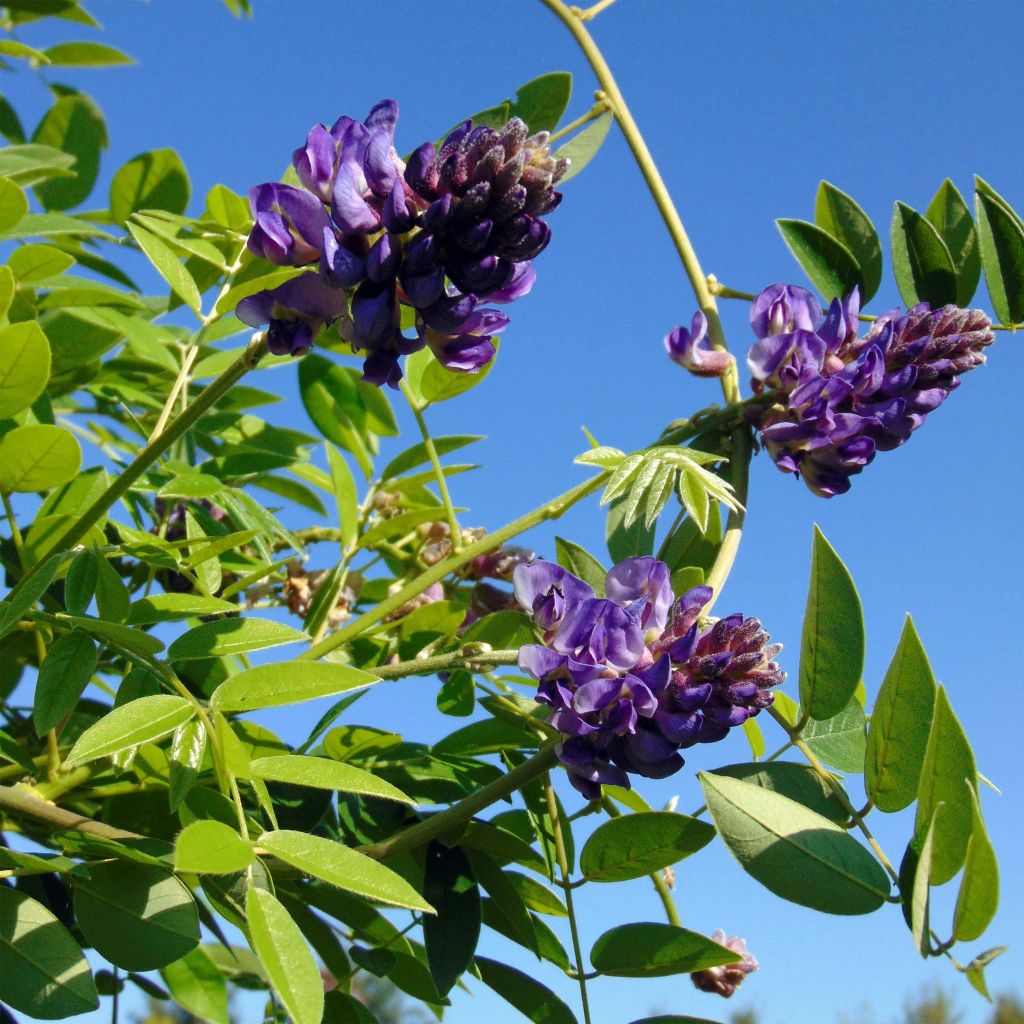

Wisteria frutescens Longwood Purple
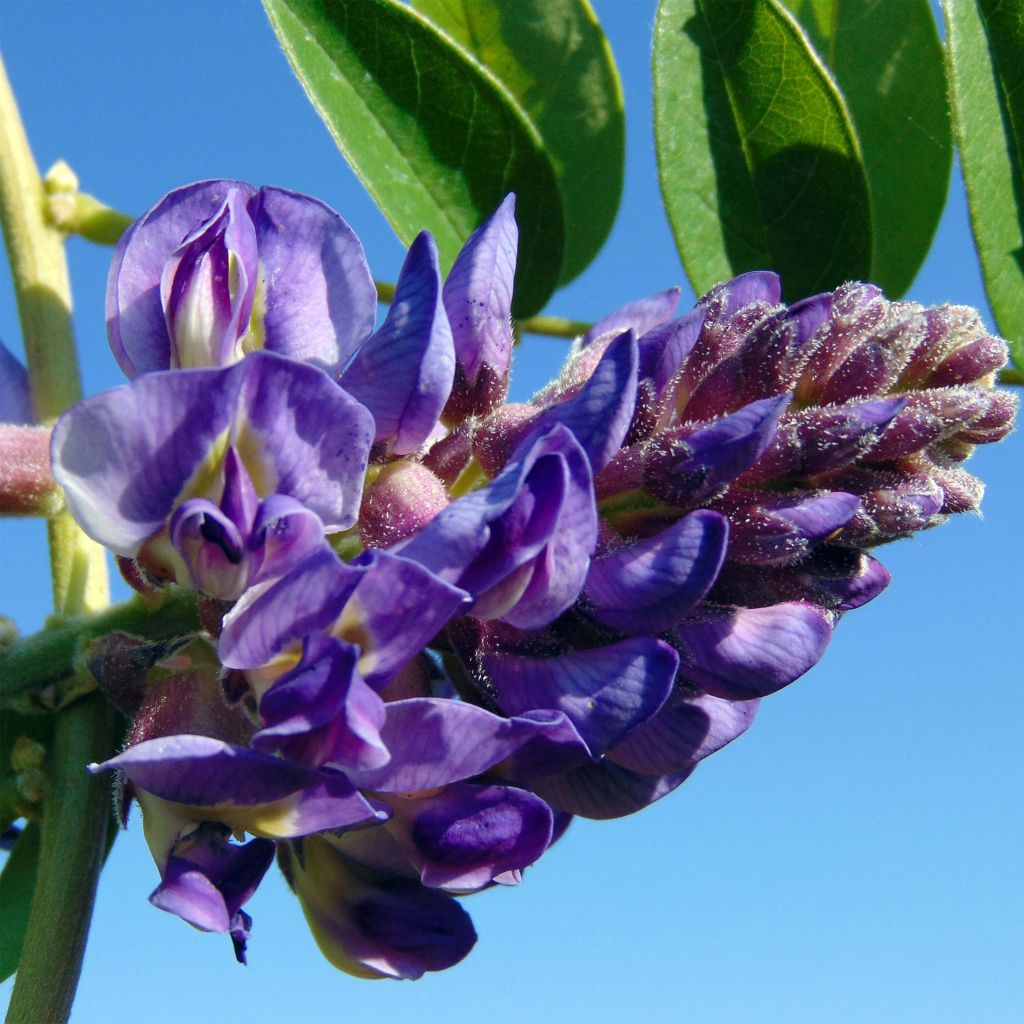

Wisteria frutescens Longwood Purple
Wisteria frutescens Longwood Purple
Wisteria x frutescens Longwood Purple
American wisteria 'Longwood Purple'
Unfortunately, I cannot attach a photo of its sad state when it arrived home! It has suffered, few leaves, dry branch, broken, and stifled... It wasn't the transport that made them like this, they must have spent some time wrapped up, closed. I hope it will recover...
Clo, 19/05/2024
Special offer!
Receive a €20 voucher for any order over €90 (excluding delivery costs, credit notes, and plastic-free options)!
1- Add your favorite plants to your cart.
2- Once you have reached €90, confirm your order (you can even choose the delivery date!).
3- As soon as your order is shipped, you will receive an email containing your voucher code, valid for 3 months (90 days).
Your voucher is unique and can only be used once, for any order with a minimum value of €20, excluding delivery costs.
Can be combined with other current offers, non-divisible and non-refundable.
Home or relay delivery (depending on size and destination)
Schedule delivery date,
and select date in basket
This plant carries a 6 months recovery warranty
More information
We guarantee the quality of our plants for a full growing cycle, and will replace at our expense any plant that fails to recover under normal climatic and planting conditions.

Does this plant fit my garden?
Set up your Plantfit profile →
Description
Wisteria frutescens 'Longwood Purple' is a recent variety of American wisteria, appreciated for its moderate growth and its willingness to flower even when very young. This attractive climbing plant blooms abundantly in late spring, after Chinese or Japanese wisterias, and then again in successive waves from late summer to autumn. Its clusters of flowers are denser and more robust than those of its Chinese cousin. They are a beautiful deep mauve-violet shade. They are also slightly less fragrant than their cousins. Wisteria spontaneously wrap their long voluble stems around railings, fences, arbours, and pergolas. 'Longwood Purple' is easier to integrate in small spaces. It will delight impatient gardeners who can admire its beautiful flowering often from the first year.
Wisteria frutescens is a woody climbing plant from the large Fabaceae family, just like clover, alfalfa, and lupins. It is native to the humid forests and riverbanks of the southeastern United States, from Virginia to Texas, from Florida in the south to New York in the north. Its long voluble stems, which are limited to a size twice smaller than those of Chinese Wisteria, lignify with age. It is perfectly resistant to cold, and undemanding in terms of soil (although it fears excess active limestone). It can grow in soils that are occasionally saturated with water. On the other hand, it can grow in poor soils that are dry in summer if they are deep enough.
The 'Longwood Purple' variety, selected in the famous Longwood Gardens in Pennsylvania, resembles the 'Amethyst Falls' cultivar. With the same compact growth, it distinguishes itself by its more colourful flower clusters. Its stems, which reach 4 to 5m (13 to 16ft), turn around supports spontaneously in an anti-clockwise direction. The growth of new shoots is very rapid, with about 1 to 2m (3 to 7ft) in one season in moist soil. The main flowering of this variety takes place in May-June, on very young plants. It can be early or late, depending on the climate. It develops on almost bare branches located near the main lignified stems. It bears long clusters measuring 10cm (4in), composed of small violet-coloured papilionaceous flowers tightly packed together. They spread a delicate scent in calm weather. They open from the base to the tip of the cluster. The plant reblooms at the end of summer, if pruned well. Young bronze leaves appear at the end of flowering and then take on a light green colour, turning yellow in autumn. They are 10 to 30cm (4 to 12in) long and divided into 9 to 15 rounded leaflets, giving the foliage a light appearance. It can live well over 50 years.
Wisteria 'Longwood Purple' is the epitome of romantic plants. Less imposing than its Chinese cousin, it can still enhance a facade or any small structure, no matter how modest. This lively plant will often outlive the person who planted it. Its compact silhouette will dress up a wall or cover an unsightly fence. It wraps itself around a trellis without restraint if left to its own devices. It tends to suffocate nearby plants. Give it a solitary location, in full sun or partial shade in hot climates. Alternatively, plant it with honeysuckles, passionflowers, and clematis. 'Longwood Purple', like 'Amethyst Falls', is highly appreciated by Bonsai enthusiasts. It can easily be trained as a small tree, transforming into a fountain of violet clusters in spring. If watered and regularly fertilised, it can live for many years on a patio or balcony, planted in a sufficiently large container.
Wisteria frutescens Longwood Purple in pictures
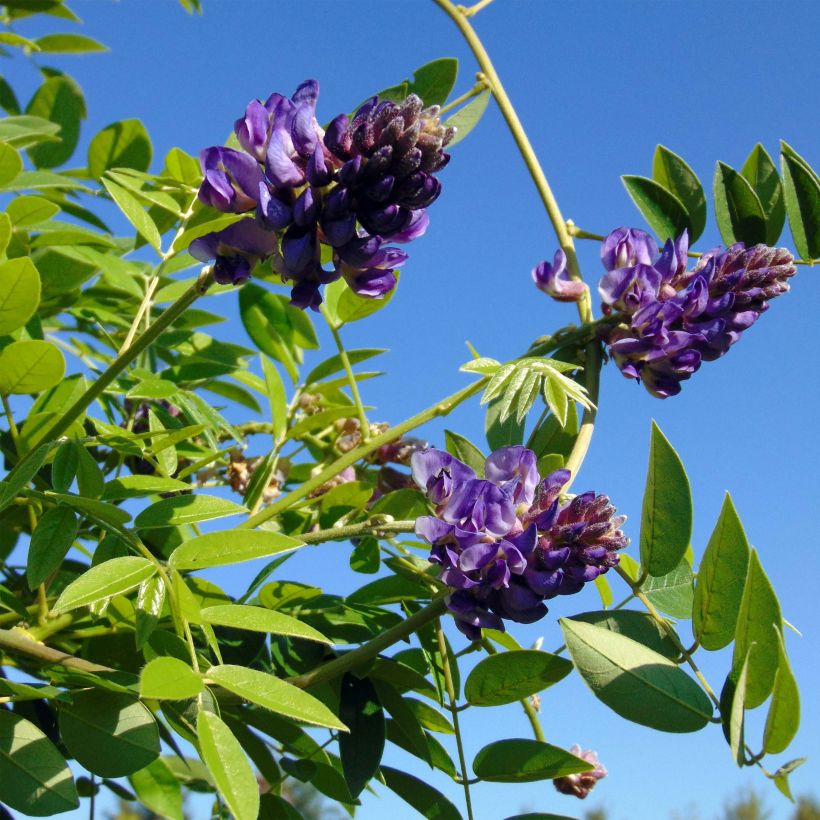

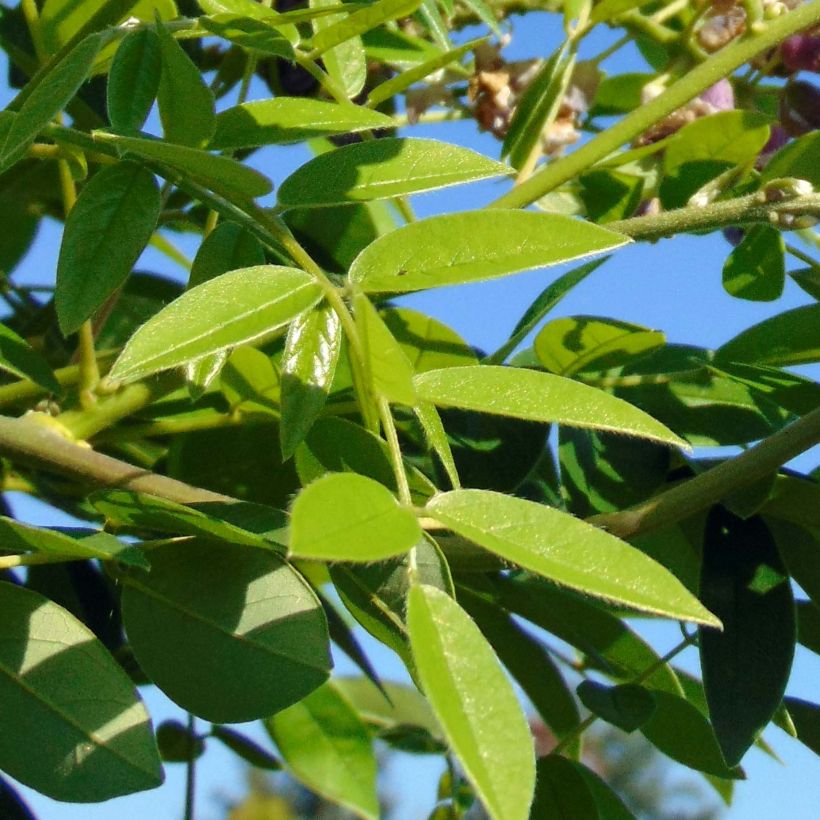

Plant habit
Flowering
Foliage
Botanical data
Wisteria
x frutescens
Longwood Purple
American wisteria 'Longwood Purple'
Cultivar or hybrid
Other Wisterias
View all →Planting and care
It is easy to grow in all our regions if the soil is sufficiently deep. It thrives in any garden soil, with a preference for poor soils. However, it prefers acidic to neutral soil, and may wither in limestone soil. Once established, it can withstand summer drought and requires no watering in most of our regions. Conversely, it can tolerate soil that is periodically waterlogged. Plant it along a wall or train it on a pergola.
Pruning is recommended to achieve better flowering, and even multiple flowerings in a season.
To improve its hardiness, plant it in well-drained soil and train it against a south-facing wall, where it will be more resistant to harsh winters.
Wisterias can be trained into tree form by elevating them on a 1.5 to 2m (5 to 7ft) "parasol" support, or used as ground cover.
Planting period
Intended location
Care
Planting & care advice
-
, onOrder confirmed
Reply from on Promesse de fleurs
Haven't found what you were looking for?
Hardiness is the lowest winter temperature a plant can endure without suffering serious damage or even dying. However, hardiness is affected by location (a sheltered area, such as a patio), protection (winter cover) and soil type (hardiness is improved by well-drained soil).

Photo Sharing Terms & Conditions
In order to encourage gardeners to interact and share their experiences, Promesse de fleurs offers various media enabling content to be uploaded onto its Site - in particular via the ‘Photo sharing’ module.
The User agrees to refrain from:
- Posting any content that is illegal, prejudicial, insulting, racist, inciteful to hatred, revisionist, contrary to public decency, that infringes on privacy or on the privacy rights of third parties, in particular the publicity rights of persons and goods, intellectual property rights, or the right to privacy.
- Submitting content on behalf of a third party;
- Impersonate the identity of a third party and/or publish any personal information about a third party;
In general, the User undertakes to refrain from any unethical behaviour.
All Content (in particular text, comments, files, images, photos, videos, creative works, etc.), which may be subject to property or intellectual property rights, image or other private rights, shall remain the property of the User, subject to the limited rights granted by the terms of the licence granted by Promesse de fleurs as stated below. Users are at liberty to publish or not to publish such Content on the Site, notably via the ‘Photo Sharing’ facility, and accept that this Content shall be made public and freely accessible, notably on the Internet.
Users further acknowledge, undertake to have ,and guarantee that they hold all necessary rights and permissions to publish such material on the Site, in particular with regard to the legislation in force pertaining to any privacy, property, intellectual property, image, or contractual rights, or rights of any other nature. By publishing such Content on the Site, Users acknowledge accepting full liability as publishers of the Content within the meaning of the law, and grant Promesse de fleurs, free of charge, an inclusive, worldwide licence for the said Content for the entire duration of its publication, including all reproduction, representation, up/downloading, displaying, performing, transmission, and storage rights.
Users also grant permission for their name to be linked to the Content and accept that this link may not always be made available.
By engaging in posting material, Users consent to their Content becoming automatically accessible on the Internet, in particular on other sites and/or blogs and/or web pages of the Promesse de fleurs site, including in particular social pages and the Promesse de fleurs catalogue.
Users may secure the removal of entrusted content free of charge by issuing a simple request via our contact form.
The flowering period indicated on our website applies to countries and regions located in USDA zone 8 (France, the United Kingdom, Ireland, the Netherlands, etc.)
It will vary according to where you live:
- In zones 9 to 10 (Italy, Spain, Greece, etc.), flowering will occur about 2 to 4 weeks earlier.
- In zones 6 to 7 (Germany, Poland, Slovenia, and lower mountainous regions), flowering will be delayed by 2 to 3 weeks.
- In zone 5 (Central Europe, Scandinavia), blooming will be delayed by 3 to 5 weeks.
In temperate climates, pruning of spring-flowering shrubs (forsythia, spireas, etc.) should be done just after flowering.
Pruning of summer-flowering shrubs (Indian Lilac, Perovskia, etc.) can be done in winter or spring.
In cold regions as well as with frost-sensitive plants, avoid pruning too early when severe frosts may still occur.
The planting period indicated on our website applies to countries and regions located in USDA zone 8 (France, United Kingdom, Ireland, Netherlands).
It will vary according to where you live:
- In Mediterranean zones (Marseille, Madrid, Milan, etc.), autumn and winter are the best planting periods.
- In continental zones (Strasbourg, Munich, Vienna, etc.), delay planting by 2 to 3 weeks in spring and bring it forward by 2 to 4 weeks in autumn.
- In mountainous regions (the Alps, Pyrenees, Carpathians, etc.), it is best to plant in late spring (May-June) or late summer (August-September).
The harvesting period indicated on our website applies to countries and regions in USDA zone 8 (France, England, Ireland, the Netherlands).
In colder areas (Scandinavia, Poland, Austria...) fruit and vegetable harvests are likely to be delayed by 3-4 weeks.
In warmer areas (Italy, Spain, Greece, etc.), harvesting will probably take place earlier, depending on weather conditions.
The sowing periods indicated on our website apply to countries and regions within USDA Zone 8 (France, UK, Ireland, Netherlands).
In colder areas (Scandinavia, Poland, Austria...), delay any outdoor sowing by 3-4 weeks, or sow under glass.
In warmer climes (Italy, Spain, Greece, etc.), bring outdoor sowing forward by a few weeks.






























